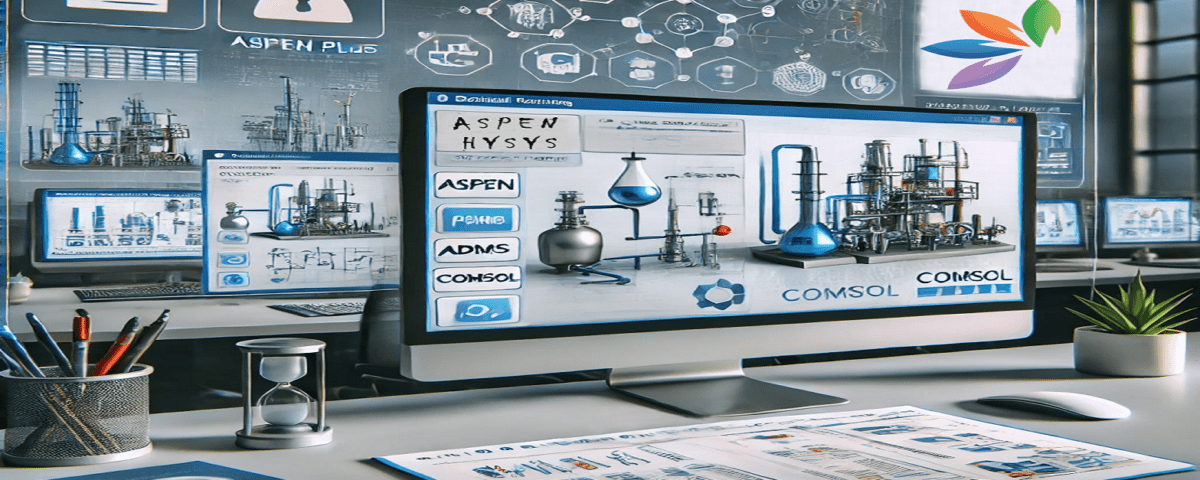
Industrial and Semi-Industrial Project
مهر ۷, ۱۴۰۳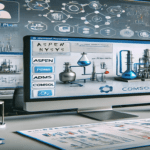
Academic and Student Project
مهر ۸, ۱۴۰۳Introduction
Today, software has become an inseparable part of all engineering projects. Unlike the past, when all projects were executed by hand and spreadsheets, learning software has become essential for every engineer. Twenty years ago, if you were applying for a job at a company, the first technical question they would ask you was about your project or thesis, specifically which professor supervised you and what grade you received. However, that is no longer the case today. Now, the first technical question they ask is which software you are familiar with and at what level, and whether you have any certificates, projects, or publications to substantiate your claims. In this article, we will introduce a collection of specialized software for chemical engineering.
We also aim to present all the software that a chemical engineer in process disciplines may require, accompanied by brief descriptions. Keep in mind that knowing these tools and becoming more familiar with the software will help you work more efficiently.
General Software
This category includes software that is not specific to chemical engineering but can be utilized by students and professionals in the field according to their needs. Examples include mathematical software like MATLAB and MAPLE, as well as Microsoft Office software suites. The variety of general software is extensive, and the applicability of these tools can vary for students in this field, but a basic familiarity with them will be beneficial. In some cases, proficiency is necessary, which will be outlined later.
Specialized Software
This category consists of software specifically designed for chemical engineering and related fields, requiring students to have completed a significant portion of their academic courses before starting to learn these tools. In fact, this software reflects the educational knowledge of a chemical engineering graduate. Thus, a proper understanding of related coursework is necessary for effective usage and results analysis. Notable software in this category includes HYSYS, ASPEN, and PROII.
These software tools are applicable for simulating and designing most processes. There are, of course, many other specialized software tools that address niche applications and are not as generalized as the aforementioned options. Examples include HTFS for simulating and designing heat exchangers and PIPE.SYS for simulating and designing piping networks. Below is a list of some chemical engineering software, along with introductions to the most important ones.
List of Chemical Engineering Software
– APMonitor Modeling Language
– ASCEND
– Aspen Plus, Aspen HYSYS, Aspen Custom Modeler by Aspen Technology
– ASSETT, D-SPICE and K-Spice by Kongsberg Oil & Gas Technologies AS
– CADSIM Plus by Aurel Systems Inc
– CHEMASIM, in-house thermodynamical simulation program at
– CHEMCAD by Chemstations
– COCO simulator
– COMSOL Multiphysics
– Design II for Windows by WinSim Inc
– Distillation Expert Trainer
– DWSIM
– EcosimPro
– EMSO, the Environment for Modelling, Simulation and Optimization from the ALSOC Project
– Dymola
– FlowManager™ by FMC Technologies
– GIBBSim
– gPROMS by PSE Ltd
– HSC Sim by Outotec
– INDISS by RSI
– ICAS: Integrated Computer-Aided System developed by CAPEC
– IDEAS by Andritz Automation
– ISESIMULATOR by VRTech
– Jacobian (Numerica Technology)
– LIBPF, the C++ LIBrary for Process Flowsheeting
– Mobatec Modeller by Mobatec
– OLGA by SPT Group (Scandpower)
– Omegaland by
– OpenModelica
– PIPE-FLO Professional by Engineered Software, Inc.
– PottersWheel Matlab toolbox to calibrate parameters in chemical reaction networks (free for edu/academic usage)
– Prode Sim, Properties
– ProSimulator by Sim Infosystems
– ProSimPlus by ProSim
– Petro-SIM
– PETROX
– ProMax, TSWEET, and PROSIM by Bryan Research and Engineering
– PRO/II, DYNSIM and ROMeo (process optimizer)
– RecoVR by VRTech
– Sim42 by Raul Cota and others
– SimCreate by TSC Simulation
– Simulis by ProSim
– SPEEDUP by Roger W.H. Sargent and students
– SolidSim – flowsheet simulation of solids processes by SolidSim Engineering GmbH
– SuperPro Designer by Intelligen
– SysCAD
– System7 by Epcon International
– UniSim Design & Shadow Plant
– Usim Pac by Caspeo
– VMGSim by Virtual Materials Group
Most Important and Widely Used Chemical Engineering Software
ASPEN (by Aspen Tech)

Aspen Plus is one of the most well-known and powerful software packages for chemical engineering, encompassing several interrelated software modules. Originally developed for simulating and designing mineral systems, particularly coal processing, it later expanded to include petroleum refining and petrochemical systems. The strength of this software lies in its robust database regarding solids, liquids, and gases. One of its primary advantages is its ability to simulate polymer systems.
For a showcase of projects completed using Aspen Plus, click here.
Dynamic Simulation of Chemical Processes with Aspen Plus Dynamics

Aspen Plus and Aspen Dynamics are among the most powerful software tools in this suite. Accurate control and simulation of processes require dynamic simulation (considering time-dependent changes). To perform dynamic process simulation, it is essential first to simulate the process in a steady-state (ignoring time variations).
In this tutorial, the static simulation in Aspen Plus and dynamic simulation in Aspen Dynamics are explained. All steps for static and dynamic simulation are taught in a step-by-step manner, and various industrial examples are used for better understanding of the material. With this software, you can simulate all chemical processes in a dynamic and realistic manner.
HYSYS (by Hyprotech)

This software is equally well-known and is user-friendly due to its well-designed menus. Initially named HYSIM, it was designed primarily for simulating refinery and petrochemical systems but later added capabilities for electrolytic and solid systems as well. Refineries play a crucial role in processing crude oil into valuable products, and Aspen HYSYS offers powerful capabilities and modules to simulate various refinery equipment and units.
For a showcase of projects completed using Aspen HYSYS, click here.
MATLAB
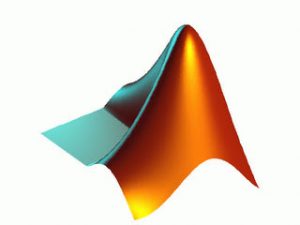
MATLAB is considered one of the best software packages in chemical engineering for data plotting and numerical computations.
COMSOL Multiphysics
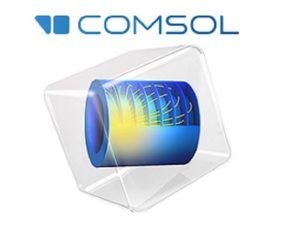
COMSOL allows for precision modeling and simulation with a comprehensive approach that is highly relevant to chemical engineering tasks.
ANSYS FLUENT
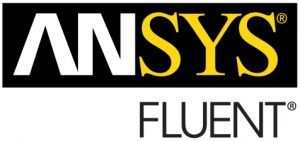
With the growing intersection of mechanical and chemical engineering sciences, ANSYS FLUENT provides a common platform for collaboration between specialists in both fields on research publications and projects.
Numerical Calculations in Chemical Engineering with Polymath

Polymath is a simple yet highly useful computational software for solving linear and nonlinear numerical problems, performing regression analysis on experimental data, and solving ordinary differential equations. It doesn’t require coding to solve mathematical problems and can address engineering issues based on multiple steps. This tutorial explores each of the four mathematical tools within the software for numerical problems in the field of chemical engineering.
Gaussian Software in Computational Chemistry

Gaussian is one of the most powerful computational software programs currently available, with various versions accessible. It possesses fundamental functions and diverse keywords, enabling it to perform the most complex quantum calculations. This software allows researchers to investigate many properties of systems, structural and chemical parameters, as well as to predict various reaction pathways.
Water Treatment Using Reverse Osmosis (RO) with ROSA Software

ROSA (Reverse Osmosis System Analysis) software, provided by DOW, is a robust tool for designing osmosis systems. Notable features of this software include the ability to provide detailed information about feed water and its capacity for computational assessments, ensuring compliance with world standards and cost estimations. As a result, this software can facilitate designs that meet standard specifications and provide a comprehensive overview of the reverse osmosis system and its associated costs.
EES Software

EES (Engineering Equation Solver) is engineering software with diverse applications in thermodynamics and heat transfer. It contains exhaustive libraries of physical properties of various materials, which has attracted many engineers, researchers, and industrialists to this software. The advancements in science and technology have increased the need for powerful and helpful tools, and undoubtedly, the best tool available is the use of computers and their software across various fields. Thus, the correct and intelligent utilization of these tools is crucial in solving many problems.
HTRI Software for Heat Exchanger Simulation

In our surrounding world, energy, particularly in the form of heat, plays a significant role, constantly exchanging to heat up one object while cooling another. Heat exchangers, essential tools in heat transfer, are as significant as day-to-day life. If you are tired of the complex and repetitive calculations involved with these devices, HTRI software is the best option to assist you. This software provides you with better insights into how heat exchangers operate and can be used for evaluation, design, or simulation of various heat exchangers.
Designing UF Units with ISD Tools for Water and Wastewater Industry

This tutorial outlines the web-based and offline design of a Ultrafiltration (UF) unit using the comprehensive and powerful inge® System Design (iSD) software with various scenarios. Understanding a successful design involves detailed design criteria, process fundamentals, and an operational perspective for a UF unit. Additionally, the products from inge GmbH are well-introduced and categorized to allow users to easily consider the necessary products in their designs. Today, an understanding of practical implementation, alongside technical and foundational knowledge, is essential in engineering.
Designing Pressure Vessels with PV Elite Software

It is rare to find an industry where pressure vessels are not part of its essential equipment. From food, pharmaceuticals, and nuclear industries to power generation, petrochemical, and refining sectors, PV Elite is the most widely used, comprehensive, and up-to-date software available in this field. Due to the strong correlation between pressure vessel design standards and PV Elite software, this tutorial attempts to provide standard education along with software use alongside real-life industry examples. A significant number of actual industrial cases will also be evaluated, which will enable students, by the end of this tutorial, to design, model, and evaluate various pressure vessels and ultimately produce reports, forms, booklets, and output drawings.
PRO II (by PROVISION)

As an engineer, you may have worked less with this software compared to others, but it is genuinely a good and simple software tool that is truly worth exploring. This software was designed for the modeling of distillation columns in refineries, which is why it performs exceptionally well in simulating distillation towers. Later, it was enhanced with features to simulate non-polymeric refinery and petrochemical systems as well.
CHEMCAD (by Chemstations)

If you have worked with this software, you will find its user interface to be quite simple. Initially designed for simulating petrochemical and refining processes, it has undergone further development. At first, when using the software, you might feel doubtful about its reliability; however, you’ll realize that in certain areas, it possesses unique capabilities, especially excelling in electrolytic systems compared to previous software.
AutoCAD Software
![]()
AutoCAD is software for drafting and designing precise and professional engineering and industrial drawings. This exciting software is one of the popular products by the American company Autodesk. Users and fans of AutoCAD can utilize both 2D and 3D capabilities and environments. The latest released version of the software corresponds to the year 2020. This software is used for designing chemical engineering process equipment.
Aspen Adsim Software

ASPEN software is one of the important and practical tools in chemical engineering, chemical industries, and petrochemicals. This software belongs to Aspen Tech, currently the largest company active in the field of chemical process simulation. Its features include modeling and simulating processes, accurately analyzing the behavior of processes in dynamic conditions, precision in performing computational operations and energy and mass balance calculations, among many other applications. ASPEN software consists of various modules, each focusing on specific areas. For example, ASPEN Plus is used for chemical process simulation, ASPEN Properties for determining physical and chemical properties of materials, and ASPEN B-JAC is used for designing heat exchangers. Another one of these modules is ASPEN Adsim, designed for simulating adsorption processes.
Aspen Custom Modeler Software

ASPEN software has the capability to simultaneously simulate various chemical processes. This software suite includes dozens of independent modules, each designed for specific tasks. The ASPEN PLUS package is one of the most essential members of this suite and serves as the foundation for the other ASPEN packages. This software package provides the capability to simulate and model chemical processes in steady-state conditions while allowing the use of other software in the ASPEN suite within it.
Aspen Custom Modeler (ACM) is one of the tools of the ASPEN software package, allowing for the integration of mathematical models simply. It is user-friendly for creating, editing, and utilizing models of operational units. Mathematical models can be solved using Equation-oriented methods within this software. The programming language in ACM is an object-oriented language, using symbols, functions, and libraries from Microsoft Visual Basic for model scripting. This software can also simulate in flowsheet format, utilize sensitivity analysis tools, and conduct optimization.
It offers very simple synchronization with Microsoft Visual Basic and Microsoft Excel. Based on the information provided, this software has been used for membrane modeling. In this section, you can view projects completed with ACM software by the Anil Pars Process Industry Company.
Aspen EDR Software
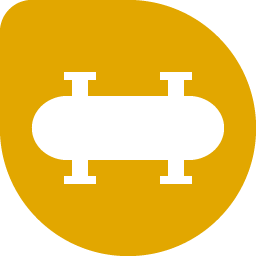
Aspen Exchanger Design & Rating, abbreviated as ASPEN EDR, is one of the sub-programs of Aspen. This software was introduced in 2012 by integrating the modules of two other software tools, HTFS and B-JAC, into what is now called Aspen EDR. This software performs the design, simulation, and evaluation of heat exchangers within various modules (shell and tube exchangers, plate exchangers, air coolers, etc.). The use of heat exchangers is widespread in refinery, chemical, and petrochemical industries; they are indeed critical equipment for central processes such as reactors and distillation columns.
Aspen Energy Analyzer (Pinch) Software

Aspen Pinch software is a tool that assists design engineers in optimizing the overall energy and value balance to reduce costs. This software is also utilized to minimize design costs in chemical units, refineries, and power plants. Using this software, you can save energy costs by reducing energy requirements and equipment needs. Given the decreasing availability of energy and the rising costs of process equipment in refineries and power plants, pinch technology proves to be a significant tool for optimizing industrial units.
CATIA Software

CATIA is one of the most well-known and powerful software solutions for design, engineering, analysis, and computer-aided manufacturing (CAD/CAM/CAE). It is a product of the French company Dassault Systèmes, abbreviated as DS. CATIA features modeling, surface modeling, machining, finite element analysis, and design of mechanisms, making it a comprehensive software for design, analysis, and production. The integration of CATIA’s environments allows for all phases of design to be performed in one place, resulting in cost reduction and increased productivity.
CATIA offers parametric and formula-based capabilities. You can change numbers and dimensions on the fly, quickly generating a model with new dimensions.
FORTRAN

FORTRAN is a compiled programming language for scientific and numerical computations. Initially developed in the 1950s by IBM for engineering and scientific programs, it has been used for over six decades in complex computational issues such as weather prediction, finite element analysis, computational fluid dynamics, computational physics, crystallography, and computational chemistry. This language is commonly used in high-performance computing and ranks among the fastest supercomputers.
One of the critical features of FORTRAN90 is its high speed in compiling computational code. This efficiency results from the optimization of the language’s commands compared to other programming languages. Moreover, with a minimal number of characters needed to create a command and a plethora of preferential and optional facilities, codes written in this language are generally smaller in size and execute quickly—an essential advantage for heavy numerical calculations.
GAMBIT Fluent Software
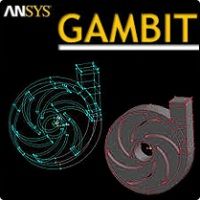
GAMBIT Fluent is designed and developed to assist analysts and designers in creating and meshing models for computational fluid dynamics (CFD) and other scientific programs. The graphical user interface of GAMBIT helps CFD designers and analysts create, mesh, and assign various regions for a straightforward and intuitive model much more easily. GAMBIT is a CAD program that provides suitable input for the Fluent software (in .msh format). This software requires Exceed for its operation and is compatible with various standard graphic and layout formats. GAMBIT can be used to create desired geometry shapes and establish suitable meshes for them.
ProMAX Software
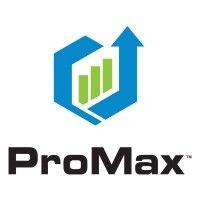
ProMAX simulation software is currently one of the strongest available tools for simulating refinery and chemical processes. One of its unique features is its rich material bank and thermodynamic packages. ProMAX boasts a significant advantage in the field of thermodynamic equations specialized for sweetening and refinery processes, making it distinctive and unique, particularly for gas sweetening processes.
For project showcases with each software mentioned, you can find the respective links listed.
Revit and PDMS Software

![]()
Today, 3D design of mechanical and electrical installations is a vital part of the building and manufacturing design process. This requirement is particularly significant in the design and construction of industrial projects. The preparation and production of execution documents and information for each system section are accomplished using various engineering tools and software.
The use of 3D design tools for installations—from the start of the design phase to the provision of necessary documentation and information for system execution and operation—offers several distinct advantages, including:
– Providing a complete view of the system and presenting alternative scenarios throughout the design process.
– More effective examination of internal components and design details.
– Increased efficiency and faster design processes compared to 2D layouts.
– Enabling client participation during the design process through generated models and 3D visuals.
– Preventing financial, time, and labor costs by accurately validating designs before the execution phase.
– High speed and accuracy in presenting material and equipment estimation tables with high detail.
– Reducing human error in the information generation process for preparing and constructing system equipment.
– Ensuring compliance with international piping standards (ASME, DIN, etc.) within projects.
– Providing 3D execution drawings of installations complementing 2D plans and P&ID drawings for optimization in project execution operations.
There are various tools and software available for 3D design of installations, among which PDMS and Plant 3D based on CAD, and Revit based on BIM are the most common.
For project showcases completed using Revit and PDMS software, click here.
Summary
With the evolution of computers and information technology, the use of these tools in various sciences has become increasingly important. The role of computers in engineering sciences is clearly evident, and mastering these fields without leveraging computational tools can be extremely challenging. Chemical engineering is no exception, and given the volume of calculations and complex processes involved, familiarity with computers and relevant software is crucial for students and professionals alike. Recently, numerical software has been extensively employed for solving educational problems in chemical engineering such as process control, kinetics, reactor design, thermodynamics, and more.
